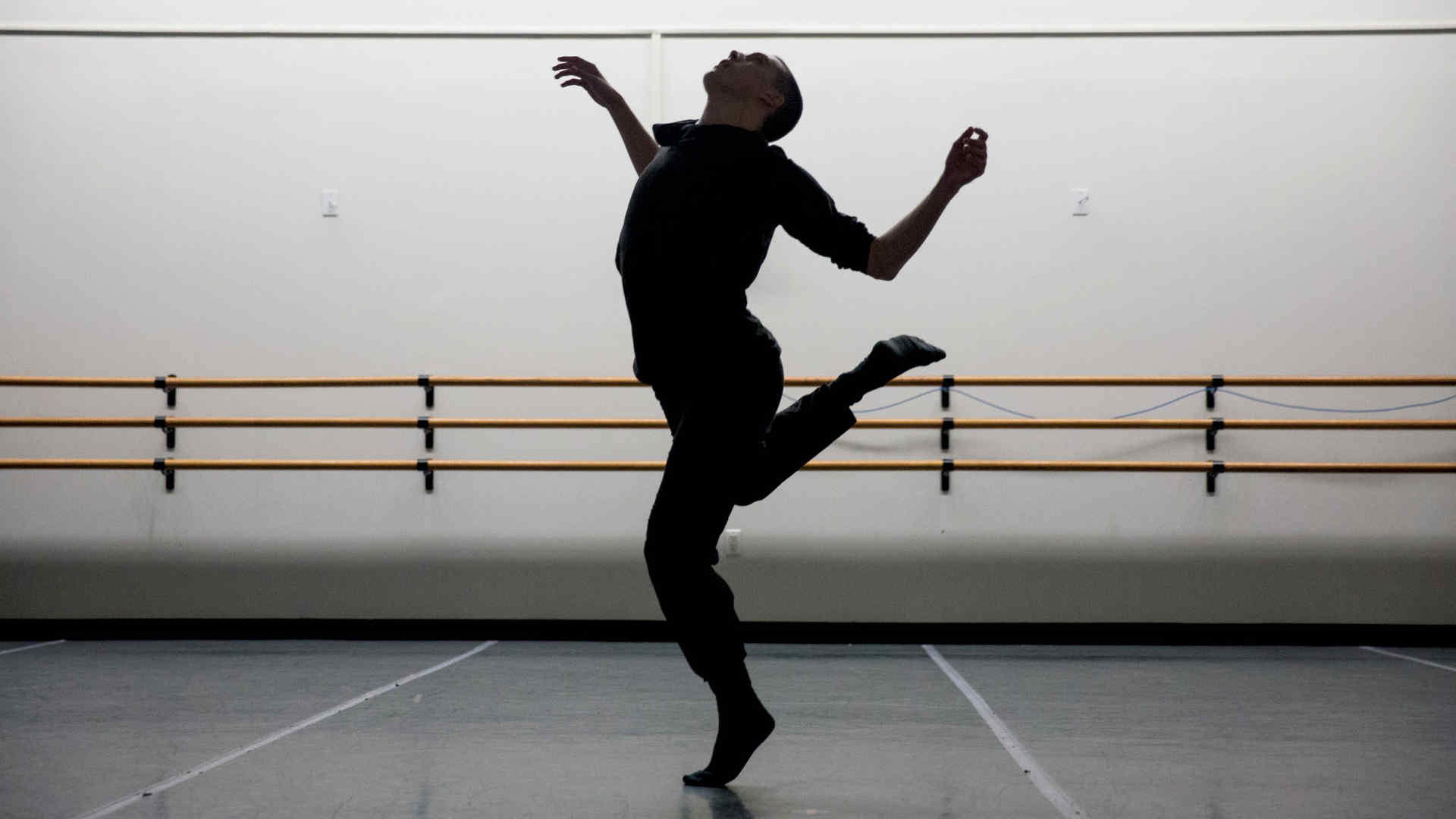
Each fall, Juilliard dancers and composers have a unique opportunity to work together. During their third year, dance students who display promise in choreography are chosen to each create a work with a Juilliard composer that will be performed by second-year dancers; the composers are a mix of undergraduate and master’s students. ChoreoComp, the popular name of the Choreographers and Composers class, culminates in two days of performances. A few weeks into the process, several of the choreographer-composer pairs talked about their collaborations.
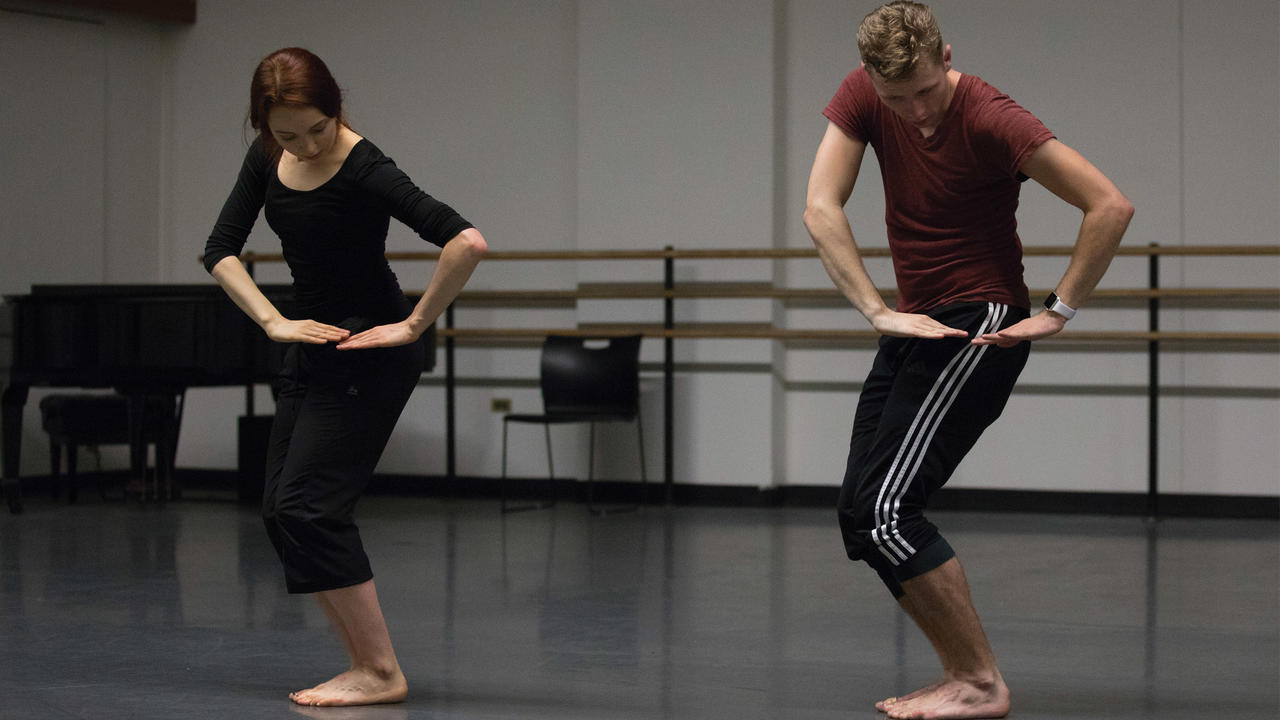
Dancer Moscelyne ParkeHarrison and Composer Jack Frerer
Jack: Composing for dance is, fortunately, familiar territory for me; I try to collaborate as frequently as possible to balance out the solitary aspects of being a composer. At Juilliard, opportunities to work with dancers are fairly frequent if you look for them. Generally, the composer-choreographer collaboration is a simple one: composer gives choreographer music, choreographer choreographs (or vice versa: composer writes music to finished choreography, like how a film composer writes to the finished cut of a film). ChoreoComp encourages a different style of collaboration, one in which both music and dance are developed simultaneously, allowing the two to grow together. It’s a difficult process and one that requires a large amount of communication, time, and trust, but also one that will ultimately result in a more seamless unification of mediums.
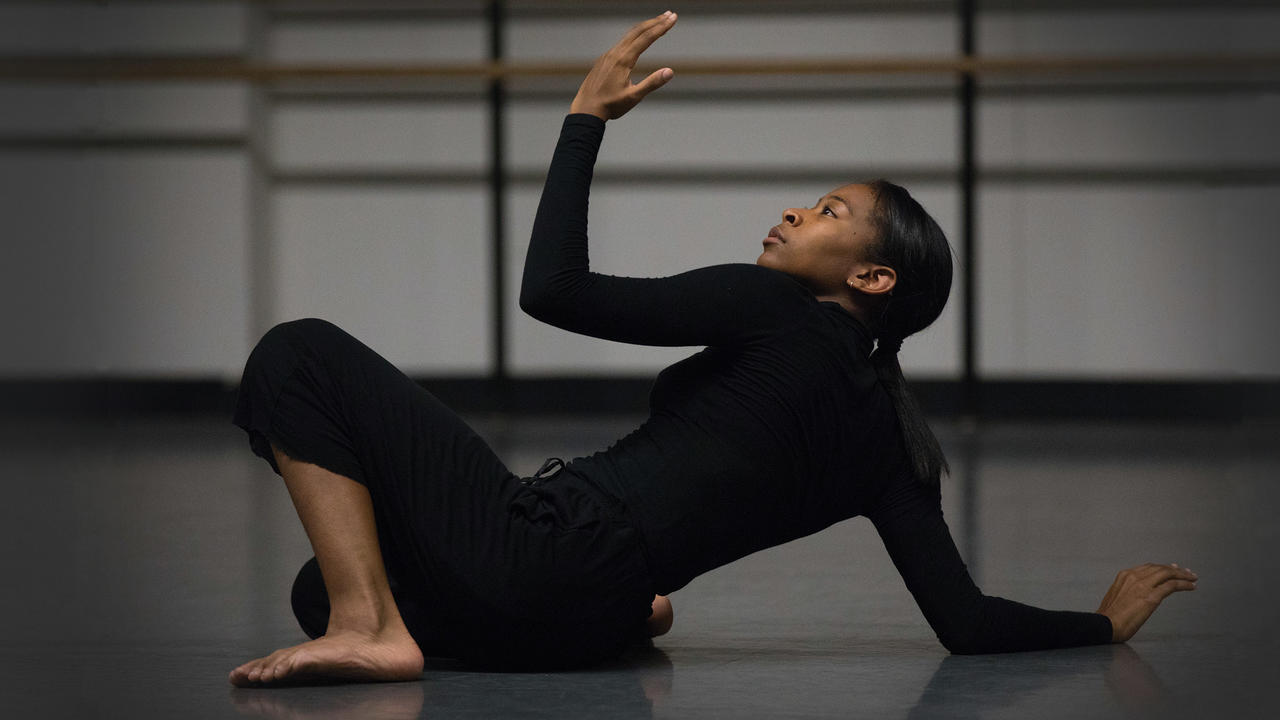
Moscelyne: I danced in ChoreoComp last year, but being a part of a rehearsal and performance process is completely different than choreographing and collaborating with a composer to create a piece.
Moscelyne and Jack: We started with a feeling, something we could both grasp: nostalgia. And while we discovered early in the brainstorming process that we shared similar tastes in music and movement, this was new territory for both of us. Although we appreciated each other’s mediums, we still come from entirely different worlds and speak different artistic languages. This led us to discussing the idea of narrative, something so ingrained in our culture and upbringing that it defies medium, and has a timeless quality prevalent in every art form. We look for meaning in everything; even in the seemingly abstract, we subconsciously create narrative and structure.
Moscelyne ParkeHarrison is a recipient of the Rebekah Harkness Scholarship in Dance and the David Merrick Scholarship. Jack Frerer is a recipient of the George Gershwin Scholarship and Richard Rodgers (’24, music theory) Scholarship in Composition.
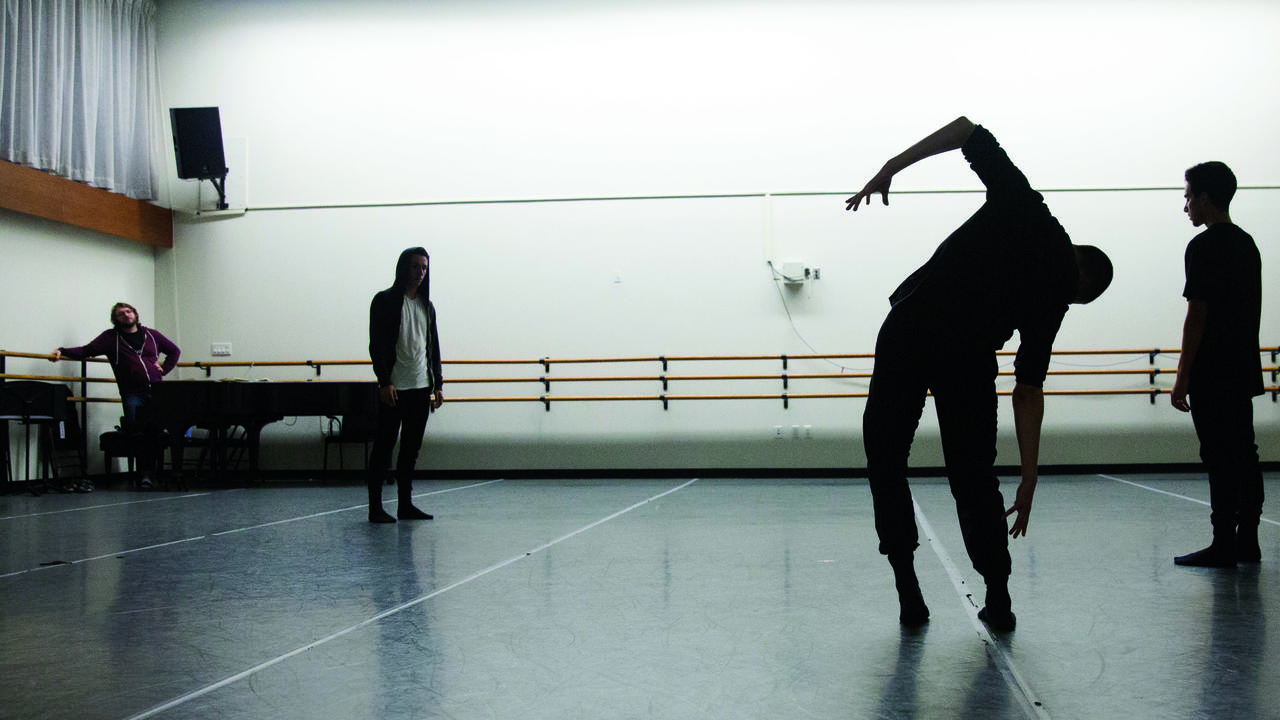
Dancer Ethan Colangelo and Composer Trey Makler
Ethan: ChoreoComp has been an interest of mine since I started creating work at Juilliard, and having the incredible opportunity to collaborate on a project with someone as talented as Trey has been very special. We share similar values of artistic expression, so it’s been exceedingly smooth and insightful to work one-on-one. The piece stemmed from my enormous curiosity about and respect for Alejandro González Iñárritu’s film The Revenant, which consists of very little dialogue yet a great deal of relentless physicality. This is what I wanted to translate into movement and make understandable, and I asked Nate Mann, a third-year actor, to write a prologue reinforcing the ideas we are trying to portray. The process has been one of the most exciting journeys I’ve had at Juilliard, and I look forward to continuing to create these atmospheres and relationships that Trey and I are trying to evoke.
Trey: I arrived to ChoreoComp a bit later than everyone else—a composer dropped it at the last minute and I was lucky enough to get the open spot. Ethan and I hit it off immediately, and he had already been toying withe xploring relationships and power dynamics between his two dancers with The Revenant as a creative springboard. I went home that night, watched the film, and felt ready to start creating. Collaborating has been a pleasure so far. Ethan’s choreography is gorgeous, and watching him teach his dancers the movement and talk about the emotional world it lives in has been crucial for me. When I’m composing, I think a lot about an emotion I want to evoke or how a piece feels, so it has been inspiring to have a collaborator who also values the emotional narrative of a work. Ethan and I spent a lot of the early stages sharing different pieces of music (some classical, some not) to pin down the sound world that best fits the piece. My favorite part about the music I’m writing is that it’s forcing me outside of my comfort zone. I’m exploring sound, timbre, and texture at a deeper level and also the versatility of improvisation, which allows the performers to take on a more personal relationship with the music and hopefully with the work as a whole.
Trey Makler is a recipient of the Henry Mancini (’43, piano) Scholarship in Composition and the Alan Seidler (’72, piano) Scholarship.
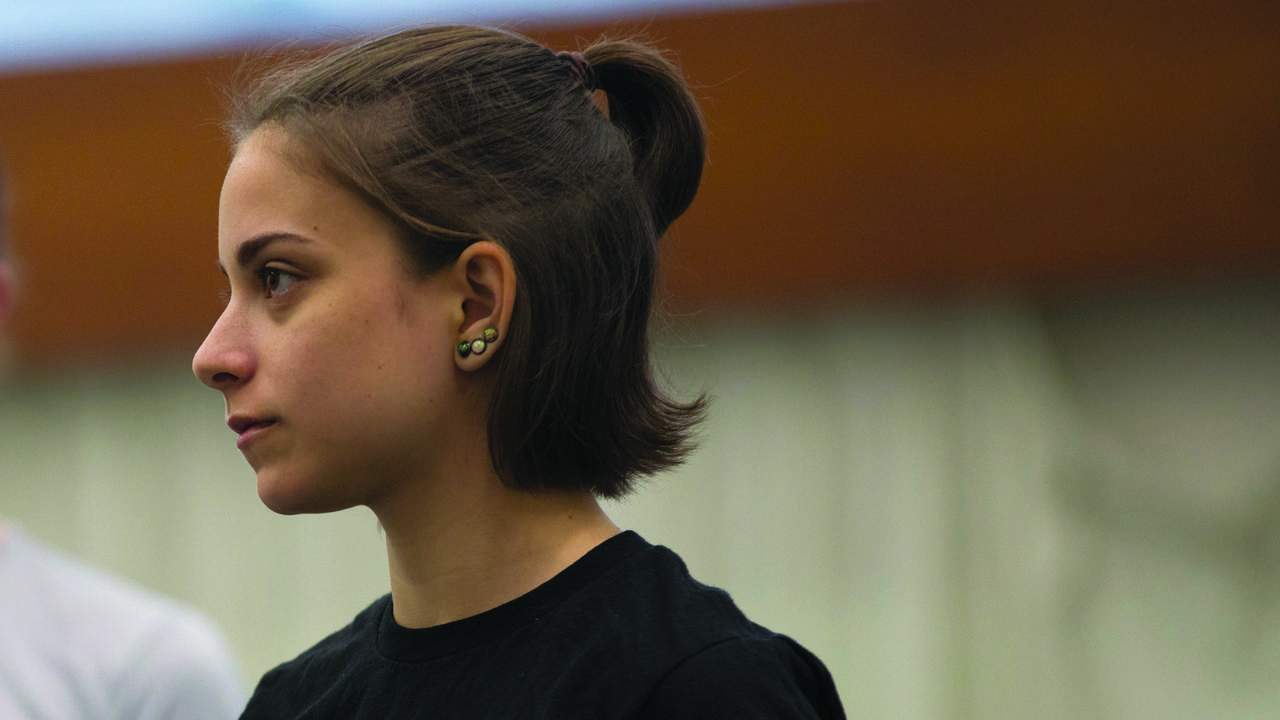
Dancer Sean Lammer and Composer Sato Matsui
Sato: Levitation Lace was the title of the five-minute collaboration piece we created in class, and it was clear at that point that we shared similar creative instincts.
Sean: We started our collaboration just by talking and taking our shared sensitivities further.
Sato: But finding aesthetic common ground is only the start of a collaboration. The challenge is in finding the compositional and choreographic language to translate one another’s expression. It took a lot of patience and mutual trust to enter a state of flow, but what we’ve been able to achieve has been absolutely rewarding.
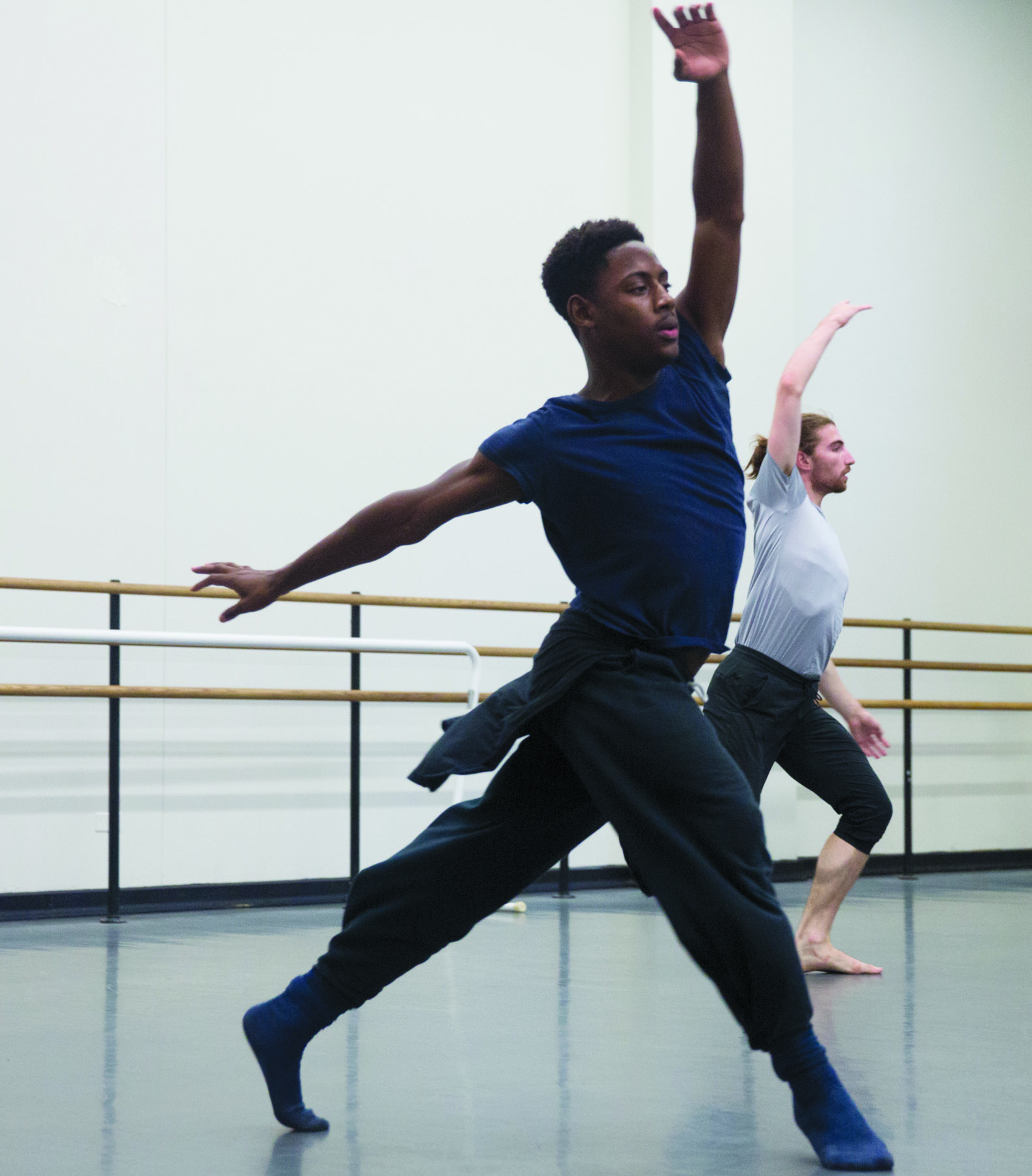
Sean: Rewarding indeed! And still, the challenge of maintaining a clear vision and direction for the piece is ever-persisting. When there are two minds working toward a shared goal, you have to constantly make sure that you’re on the same page. It can also be challenging for a composer to follow a dance rehearsal and vice versa. After one rehearsal, Sato expressed uncertainty as to where exactly she fit into the process. I think this problem likely derives from the fact that new movement takes time to embody. Before I could start creating a sense of chronology, I felt it more important for the dancers to really have an understanding of my movement in their bodies.
Sato: And with that, the concept of time is different in composition and choreography. I have been astonished to see how Sean’s choreography has metamorphosed in very surprising and nonlinear ways. As a composer who tends to work chronologically, I see my work process as being much more like watercolor painting—once I’ve put my notes on paper, I rarely go back and change the fundamental form of my music. The flexibility in Sean’s workmanship is something that I’ve enjoyed exploring
in my own studio.
Sean Lammer is a recipient of a Juilliard Scholarship. Sato Matsui is a Celia Ascher Fellow in the C. Starr Doctoral Fellowship program.